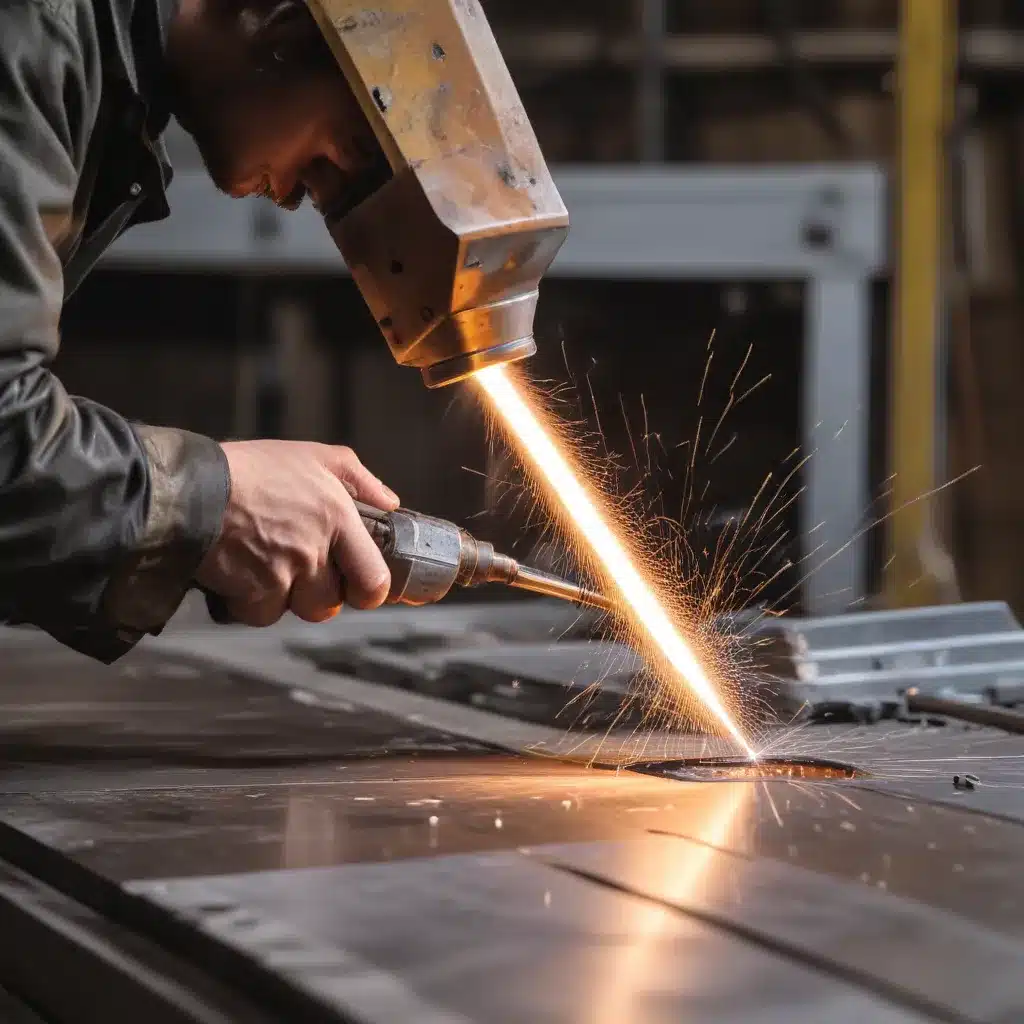
As an experienced welder and metal fabricator, I’ve had the privilege of working with a wide range of welding techniques and equipment over the years. But one method that has truly captivated me is the art of friction stir welding. It’s a process that combines the precision of traditional welding with the innovative approach of solid-state joining, and the results are nothing short of remarkable.
Understanding the Power of Friction Stir Welding
Friction stir welding is a fascinating technique that utilizes the heat generated by the friction between a rotating tool and the workpieces to create a strong, seamless bond. Unlike traditional fusion welding, which relies on melting the base metal, friction stir welding occurs in the solid state, meaning the metal never reaches its melting point. This unique approach offers a host of benefits, particularly when it comes to fabricating lightweight, high-strength structures.
One of the standout advantages of friction stir welding is its ability to produce welds with superior mechanical properties. By avoiding the extreme temperatures associated with fusion welding, the material’s microstructure remains largely unaltered, resulting in joints with enhanced strength, toughness, and fatigue resistance. This makes it an ideal choice for applications in the aerospace, automotive, and marine industries, where weight reduction and structural integrity are paramount.
Moreover, the friction stir welding process is remarkably versatile. It can be used to join a wide range of materials, including aluminum, magnesium, copper, and even some steel alloys. This flexibility allows fabricators like myself to tackle a diverse range of projects, from cutting-edge aerospace components to durable marine structures.
Achieving Precision and Consistency in Friction Stir Welding
As a seasoned welder, I know that precision and consistency are the cornerstones of high-quality fabrication. With friction stir welding, these attributes are particularly crucial, as the process relies on carefully controlling a range of parameters to achieve the desired results.
One of the key factors in ensuring precision is the design and optimization of the welding tool. The tool’s geometry, materials, and rotational speed all play a vital role in the heat generation and material flow during the welding process. By meticulously selecting and adjusting these parameters, we can create welds with exceptional dimensional accuracy and minimal defects.
Consistent joint preparation is another critical aspect of friction stir welding. The surfaces of the workpieces must be clean, free of contaminants, and properly aligned to ensure a seamless, high-quality weld. This attention to detail requires a deep understanding of the material properties and the specific challenges associated with each project.
Overcoming Challenges in Friction Stir Welding
As with any advanced welding technique, friction stir welding is not without its challenges. One of the primary obstacles we face is the need for specialized equipment and expertise. The welding tools and machines required for this process are often more complex and expensive than those used in traditional fusion welding.
Additionally, the process parameters must be carefully monitored and adjusted to account for variations in material thickness, joint design, and environmental conditions. This level of precision can be demanding, requiring a high degree of skill and experience from the welding team.
Despite these challenges, I’ve found that the rewards of mastering friction stir welding far outweigh the difficulties. The ability to produce lightweight, high-strength structures with unparalleled quality is a source of immense pride and satisfaction for me as a fabricator.
Embracing the Future of Friction Stir Welding
As the industry continues to evolve, I’m excited to see the advancements and innovations that will shape the future of friction stir welding. Ongoing research and development are exploring new applications, optimizing tool designs, and improving process control, all with the goal of making this technology more accessible and efficient.
One area of particular interest is the potential for automating and robotizing the friction stir welding process. By incorporating advanced sensors, control systems, and robotic arms, we can achieve even greater precision, consistency, and productivity in our fabrication projects. This not only enhances the quality of our work but also helps us meet the growing demand for lightweight, high-strength structures in various industries.
Furthermore, I’m eager to see how the continued development of digital technologies, such as simulation and modeling tools, will impact the way we approach friction stir welding. These tools can help us optimize our processes, troubleshoot potential issues, and train the next generation of welders and fabricators, ensuring that the art of friction stir welding is passed down and refined for years to come.
Conclusion: Embracing the Artistry of Friction Stir Welding
As I reflect on my experience with friction stir welding, I can’t help but feel a deep sense of appreciation for the artistry and precision involved in this remarkable technique. It’s a process that demands not only technical expertise but also a keen eye for detail and a passion for pushing the boundaries of what’s possible in metal fabrication.
Whether I’m working on a complex aerospace component or a rugged marine structure, the satisfaction I derive from creating high-quality, lightweight, and durable welds is truly unparalleled. It’s a testament to the power of innovation, the importance of continuous learning, and the unwavering dedication that defines the world of metal fabrication.
So, if you’re a fellow welder or fabricator, I encourage you to explore the wonders of friction stir welding. Embrace the challenge, hone your skills, and unlock the full potential of this transformative technology. Together, let’s continue to redefine the limits of what’s possible in the world of metalworking and leave an indelible mark on the industries we serve.
And for those of you who are just starting your journey in the world of welding and fabrication, I invite you to visit The Weld Fab – a community dedicated to celebrating the art, science, and innovation that define our industry. It’s a place where we can share our stories, exchange ideas, and inspire the next generation of welding and fabrication professionals. Join us, and let’s forge a future where precision, quality, and innovation reign supreme.


